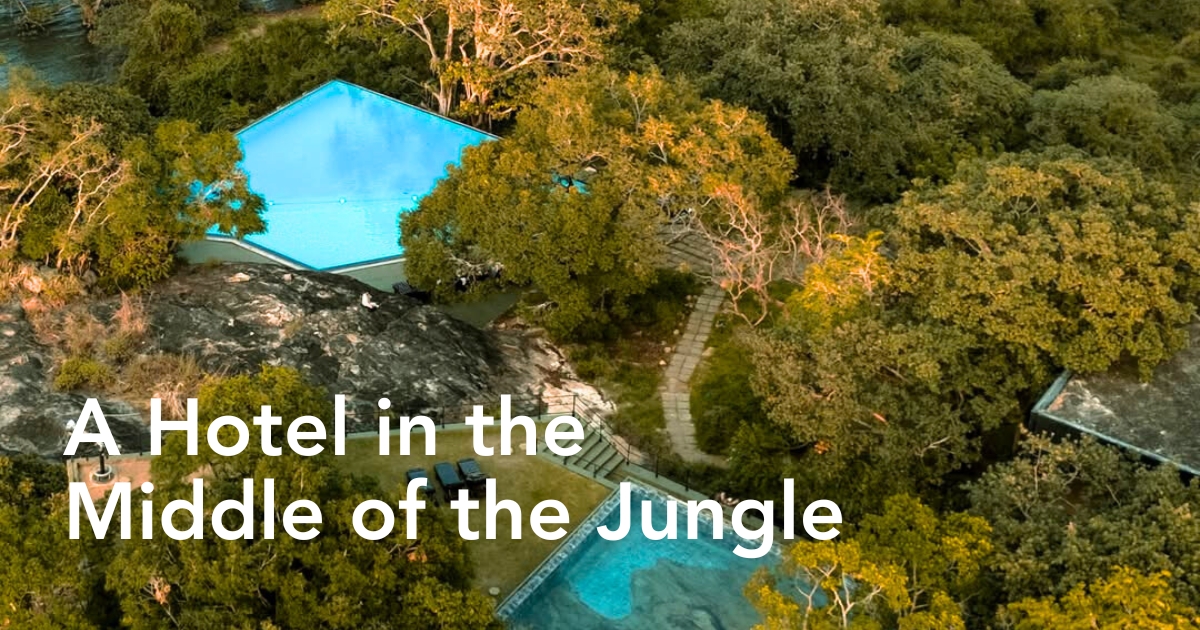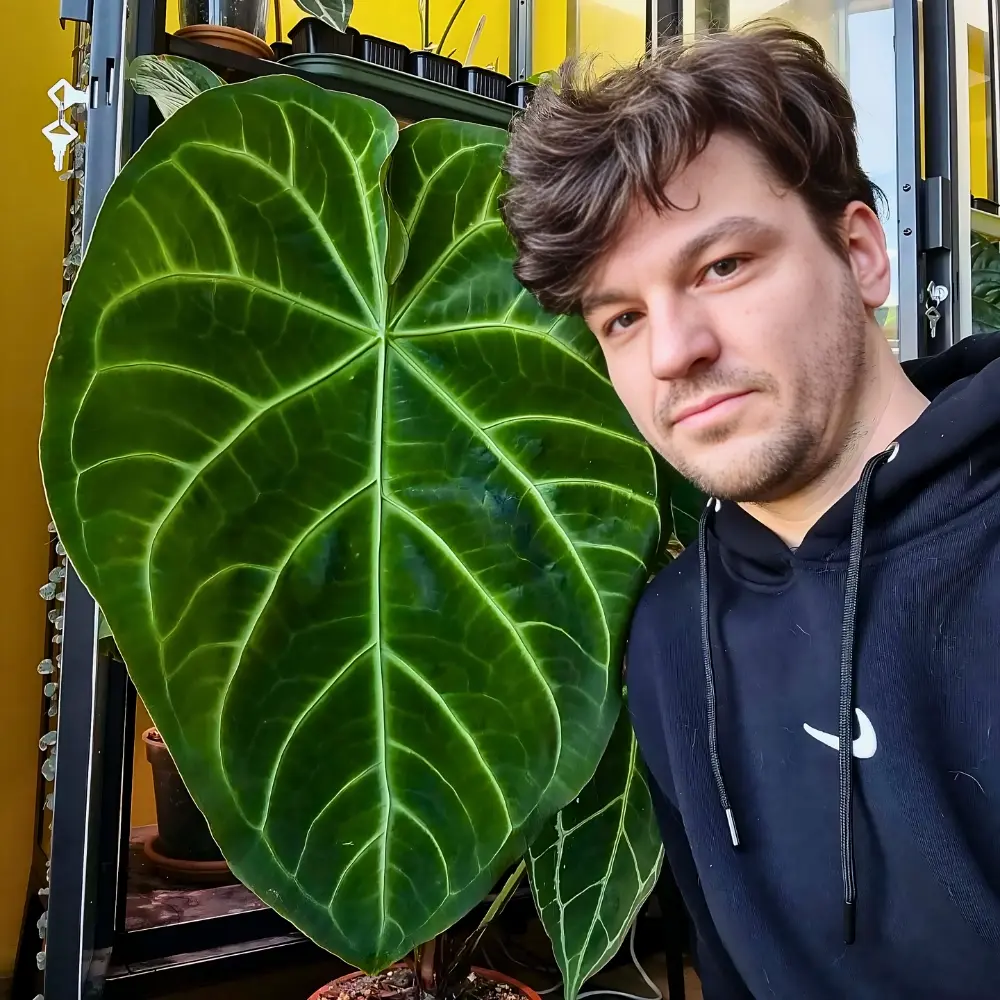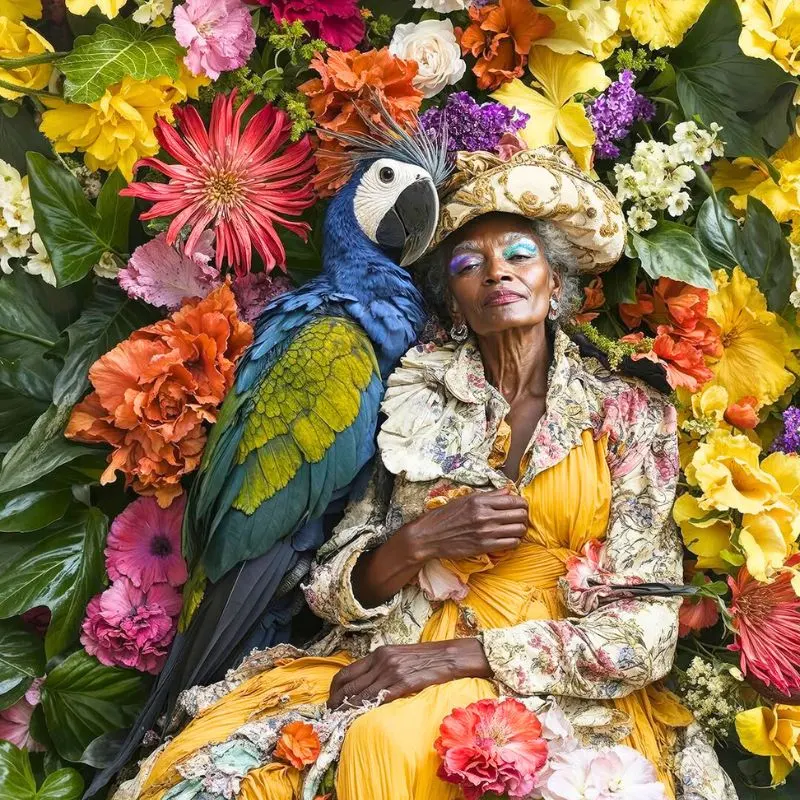Heritance Kandalama sits along the edge of the Dambulla jungle, overlooking the Kandalama Reservoir. Designed by Sri Lankan architect Geoffrey Bawa, the hotel follows the terrain rather than altering it. The structure is built into the natural rock face, extending across the hillside in a long, low profile. Trees, vines, and moss have grown over the stone, blending the building into the surrounding forest.
Heritance Kandalama – Green Design Embodied in the Sri Lanka Landscape
The approach for the hotel was not aesthetic for aesthetic’s sake. Bawa’s intention was environmental integration. The building was positioned to limit disruption. No trees were removed, and as a bonus point, the natural contours of the land were preserved. The architecture invites the landscape in, rather than keeping it out.
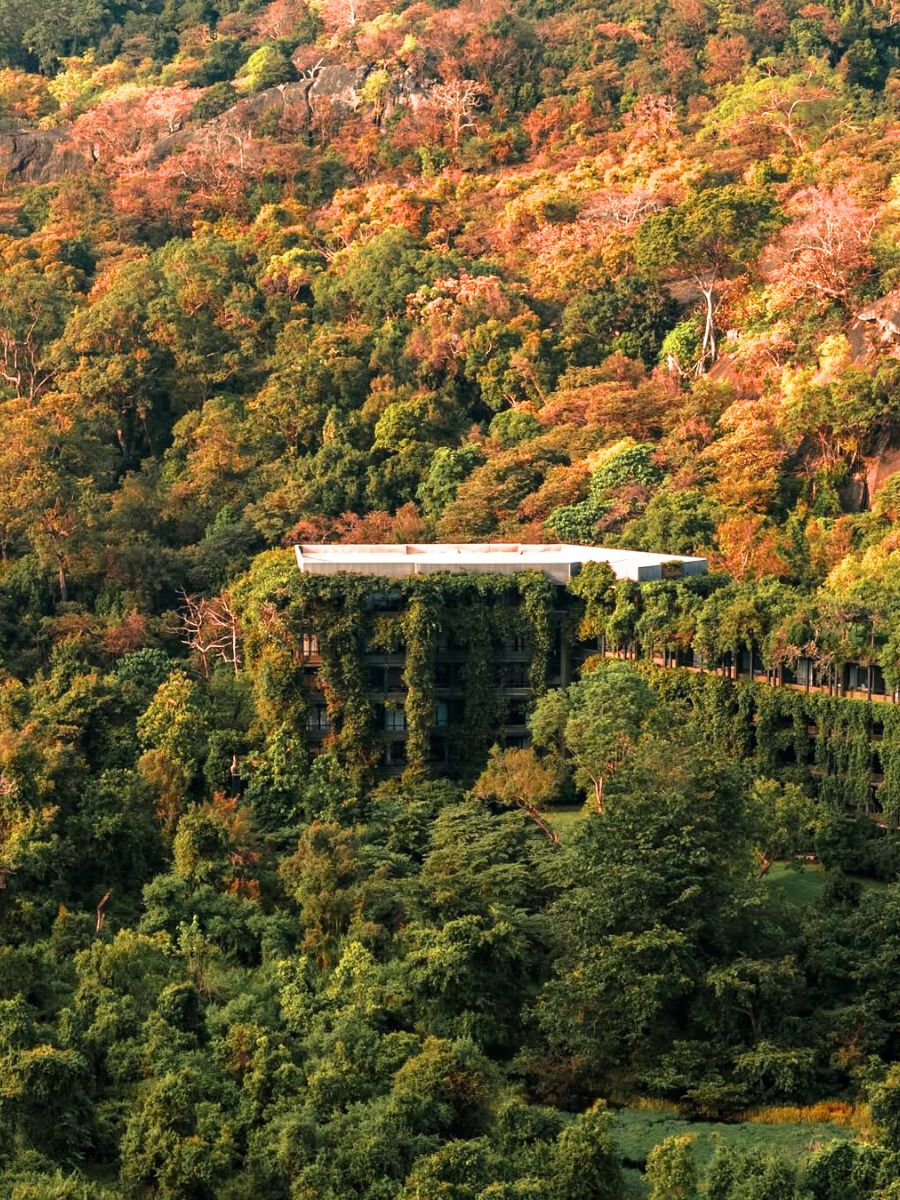
Greenery is central to the experience. From the open-air corridors, birds, monkeys, and insects are visible in their habitats. Rooms face the reservoir or the forest canopy. Large windows and open terraces maintain a constant connection with the surrounding environment. The jungle is an experience of nature at its finest, seeing tones of green you've never imagined.
For guests, the impact of this environment tends to be immediate, even if subtle at first. Without the constant background noise, rigid schedules, or tightly controlled interiors found in most hotels, there is room for something quieter to emerge. Movement slows, and the urge to check screens fades because the jungle sets a different rhythm, one that replaces the pressure of work emails, traffic noise, and digital overstimulation with sounds of birds, wind, and water.
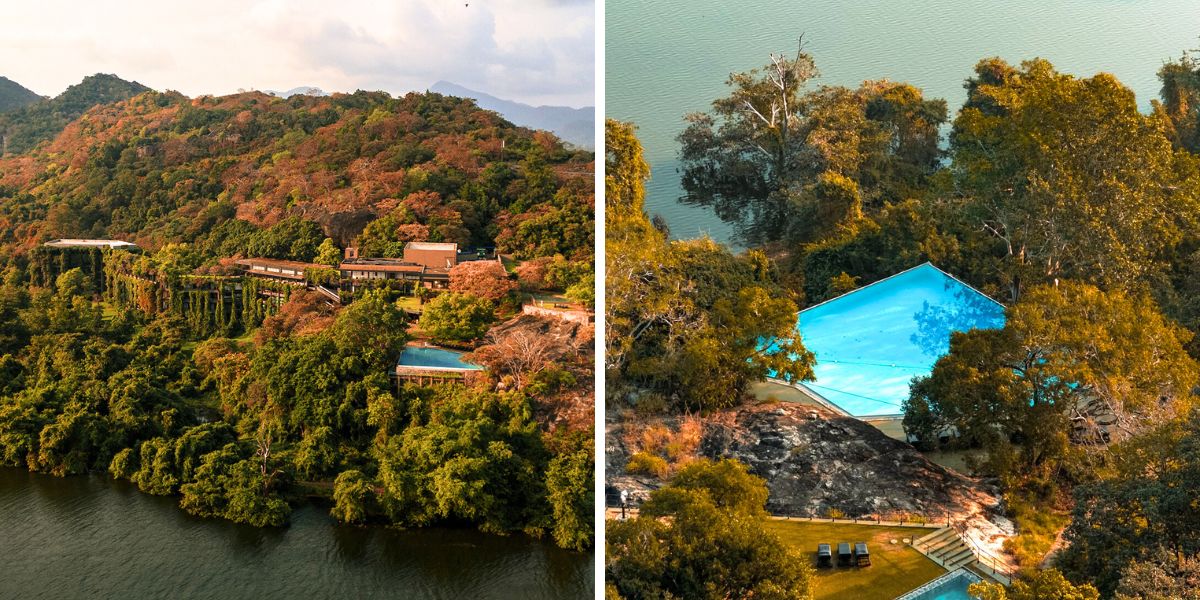
After just a day or two, many guests begin to notice a shift. There’s less urgency in their movements, less need to fill silence with conversation or activity. Attention turns outward to small changes in light, to the texture of leaves, to the feel of humidity on the skin, to the constant but unobtrusive presence of life all around.
Environmental Certifications and Practices
Heritance Kandalama has long been recognized for its environmental practices. It became the first LEED-certified hotel in Asia. It holds certifications for energy efficiency, water conservation, and waste management. Its operations include rainwater harvesting, bio-gas systems, composting, and wastewater treatment. The hotel also partners with nearby villages and farms, creating supply chains based on proximity and transparency.
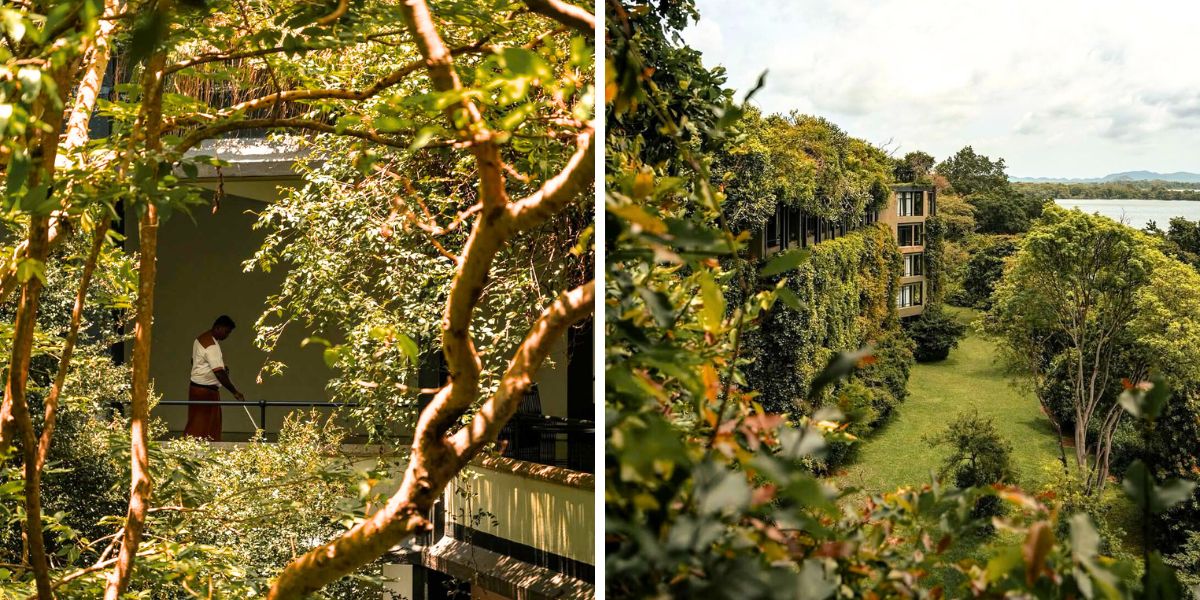
Minimalism in Design and Materials
The interior spaces remain minimal and functional. Stone, wood, and cement dominate the material palette with lighting that is soft and indirect. The design avoids excess. Airflow is natural. Cooling comes from cross-ventilation and shaded surfaces, and every decision reflects long-term sustainability rather than short-term impact.
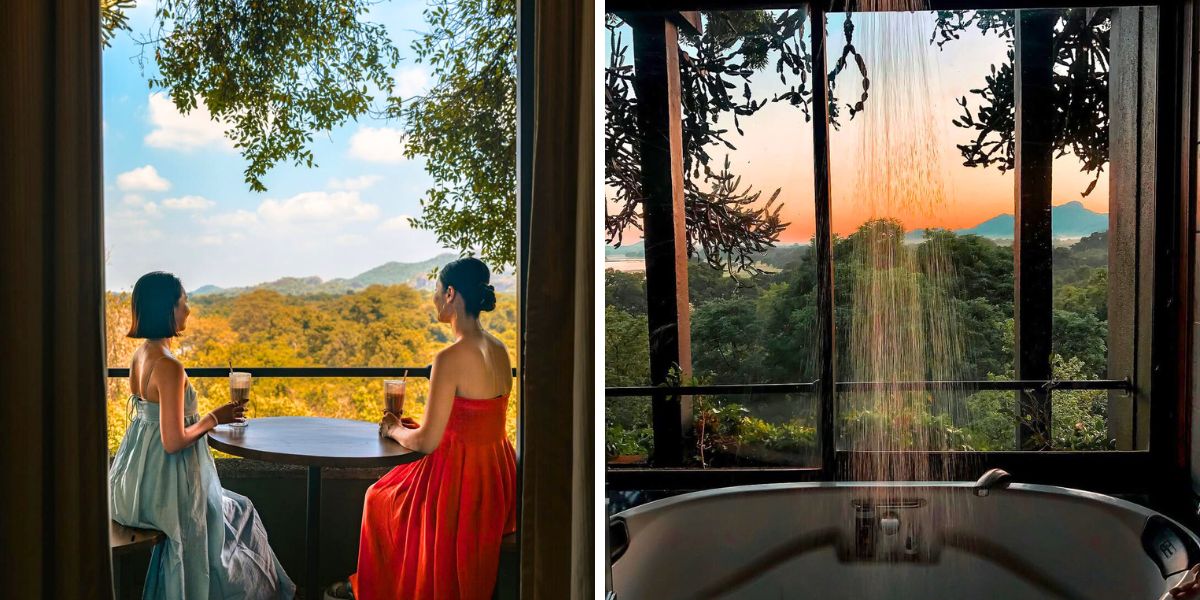
The surrounding area includes the Sigiriya Rock Fortress and the cave temples of Dambulla, but the property itself is not secondary. It functions as a retreat, a study in ecological respect, and an example of architecture with restraint.

Heritance Kandalama remains one of the most referenced projects in discussions about sustainable tourism. It continues to operate not as a resort that happens to be near nature, but as a place built inside it, with full awareness of where it stands and how it interacts with its environment. Check out more features of the hotel on Heritance Kandalama's Instagram.

